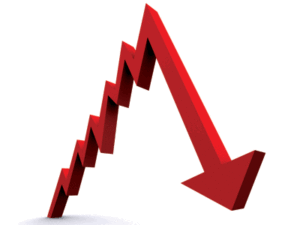“Pride is the fire that ignites our ambitions. Humility is the fire screen that keeps us from burning down the house.” – Michael Masterson
The provenance (PRAH-vuh-nuntz) of a work of art – from the French for “to come from” – is a record of its ownership. It is used to confirm the piece’s authenticity and value. As I used it today: “Suzanne bought this [Morales painting] for a good price from a distressed buyer. It has excellent provenance and is a good size at 40 x 32 inches.”
Re my concerns about the US economy in the May 13 issue:
“The economic numbers you cited are scary. Have you made any adjustments in your investments in response to them?” – PL
My response: No. I haven’t. Since I favor income over appreciation as a general investing rule, more than 80% of my investments should either keep up with or beat inflation. And half of the other 20% is in precious metals – mostly gold bullion, which will likely increase in value in the coming years.
On “Britain’s Got Talent,” Reuben Gray sings an emotional apology to his girlfriend (who is in the audience)…
The Market Is Foundering. What to Do?

By some metrics, this has been the worst year in the stock market since the Great Depression.
The larger indexes are down around 20%, and many tech stocks have lost 50% to 80% of their start-of-the year values.
What to do?
You can sell your stocks, take the loss, and put your money in cash. And then try to figure out when to get back into equities. The problem with cash, of course, is that it is currently losing 0.75% of its value every month – and that will increase if inflation pressures continue.
You could put your money in gold. The value of gold (and most other precious metals) historically keeps pace with inflation. In fact, gold is trading today at about $1,840 an ounce, which is about 8% higher than it was in January.
If you already have gold and enough cash to cover emergencies, you might want to look at what sort of stocks you are holding. If your portfolio includes what I call Legacy stocks (e.g., Nestles, Coca Cola, IBM), you can expect that their prices will, like gold, keep up with inflation. That’s because companies like these have the ability to gradually increase their prices as their costs go up.
If you have lots of tech stocks, you might want to ask yourself if you think the companies they represent will still be around if we enter into a recession. Most of the tech stocks I own (Apple, Amazon, Google, Meta) are big enough to recover from their currently discounted prices. So I may be buying more of them. If the tech stocks you own are smaller and less certain to survive a recession, you may want to think about dumping them.
If your portfolio is made up of, say, 10% smaller tech stocks, 50% to 60% Legacy stocks, and 30% to 40% of those world-dominating tech companies, you might want to consider doing what I’m doing: absolutely nothing.
In any case, keep these two facts in mind:
* About once a decade, the stock market experiences a downturn of 20% to 30%. That’s what we are seeing now.
* Since the stock market was created over 100 years ago, its overall value has been a one-way ride. Up about 8% to 10% a year, depending on how you measure it.
On Timing the Stock Market:
Timing the market – i.e., buying in and selling off according to what you think will happen in the future – is difficult. But if you like the idea, I know of two ways that have, at least, some logical justification.
The first is using P/E (price-to-earnings) ratios. I used to do this, and still do when buying individual stocks. I feel comfortable buying a company when its stock price is at or below 18 times earnings. But this isn’t always reliable. In 2009, for example, in the panic of the mortgage finance crisis, stock prices plummeted and the P/E ratio of the S&P 500 soared over 100. I saw that as an anomaly and didn’t sell, which I’m happy about since prices rose for the next 11 years.
Warren Buffett uses another indicator: Market Cap/GDP, which compares the overall stock market value to the GDP (gross domestic product). Historically, this ratio has been around 80% – or 8 units of stock market capitalization to 10 units of GDP. The rule is to expect a sell-off when the ratio goes above 120%. But in 1999, the ratio hit a high of 140%., and since then, it’s climbed even higher.
Stocks are out. But art is in.

Andy Warhol’s “Shot Sage Blue Marilyn” sold in four minutes earlier this month for $195 million, an all-time high for an American work. Despite a foundering stock market, 2022 continues to be a big year for art. Why? It could be that 2021 was also a great year for art. And that, with stocks tumbling, people are moving their money into what they see as a safer, inflation-resistant asset class.
Click here.
Meat Speech Is Now Hate Speech
I heard about the all-meat diet when Jordan Peterson claimed that he had used it to treat his depression. He decided to try it after his daughter had success with it treating a series of medical problems stemming from a bout with juvenile rheumatoid arthritis.
Limiting one’s diet to meat seemed extreme to me. Giving up green vegetables and other plant-based sources of vitamins and minerals seemed nonsensical.
A friend of mine tried it for a skin inflammation problem, and reported positive results. Since then, I’ve read more anecdotal evidence in its favor. And there are early studies suggesting that it can be effective for a variety of auto-immune disorders.
It’s too early to tell if there’s something to this, but it seems like a hopeful development. Right?
Well… no.
Like almost every health topic today, the all-meat diet has become a political hot potato. According to some, it’s another racist conspiracy. And opposition to it has shown up everywhere, including in this unpublished TEDx talk.
Check it out here.
Salzburg

I’ve been to Munich and Vienna several times. I never thought of visiting Salzburg, but K and I did just that several years ago and enjoyed it very much. It is a World Heritage Site, offering all that you’d expect from one: narrow cobblestone streets, baroque architecture, elaborate palaces, and medieval churches.
A highlight for me was visiting the birthplace of Mozart, my favorite classical composer. We also enjoyed a tour of the filming locations for “The Sound of Music.”
Interesting fact: Maria and the von Trapps were real people. And they really did live in the Villa Trapp, which now operates as a kind of B&B for visitors to Salzburg. It is not nearly as grand, however, as the Hotel Schloss Leopoldskron, the property used in the film
“Ours may become the first civilization destroyed, not by the power of our enemies, but by the ignorance of our teachers and the dangerous nonsense they are teaching our children.” – Thomas Sowell
